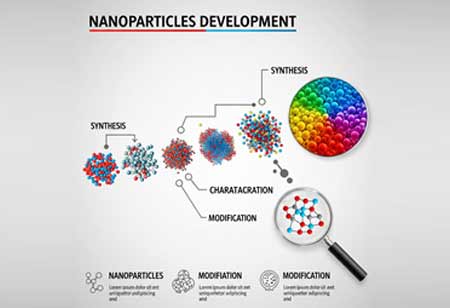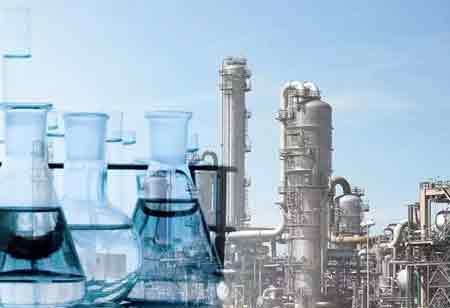Thank you for Subscribing to Chemical Industry Review Weekly Brief
Transforming the Chemical Industry through Advanced Nanoparticle Development
The push toward green chemistry inspires the development of biodegradable and environmentally benign nanoparticles, particularly for applications in agrochemicals, water purification, and controlled-release systems.

By
Chemical Industry Review | Friday, September 05, 2025
Stay ahead of the industry with exclusive feature stories on the top companies, expert insights and the latest news delivered straight to your inbox. Subscribe today.
The development and integration of nanoparticles in the chemical industry have emerged as one of the most transformative advancements in recent years. Several critical factors are propelling this growth. The demand for high-performance materials and the need to minimize waste and enhance chemical reaction efficiency have intensified the focus on nanoparticle-based solutions. Companies are seeking advanced materials that can deliver superior strength, thermal resistance, catalytic activity, and functional precision capabilities that nanoparticles can achieve due to size and high surface area-to-volume ratio.
Industries are increasingly under pressure to innovate within sustainable frameworks, and nanoparticles offer pathways to reduce harsh chemicals and excessive energy consumption. Technological implementation in nanoparticle development is progressing rapidly, fueled by advances in nanofabrication, surface functionalization, and process automation. Precision synthesis methods such as sol-gel processing, chemical vapor deposition, microemulsion, and laser ablation allow manufacturers to control nanoparticles' size, shape, and functionality more accurately. ML and AI integration accelerates discovery and optimization by modeling particle behavior, predicting performance, and guiding formulation strategies.
The technologies shorten development cycles, improve reproducibility, and reduce the costs of trial-and-error experimentation. Emerging trends point toward a broader diversification of nanoparticle types and their integration into composite materials. Metal-based nanoparticles like silver, gold, and platinum are widely used for their conductivity and catalytic properties. Carbon-based nanoparticles, including fullerenes, carbon nanotubes, and graphene, are becoming central to advanced material applications due to their extraordinary strength, conductivity, and lightweight nature.
Industrial Applications and Market Impact Across Chemical Segments
Nanoparticles are making substantial impacts across multiple segments of the chemical industry. In catalysis, nanoparticle-enabled catalysts have drastically improved reaction rates and selectivity, reducing the energy required for chemical transformations and increasing process efficiency. These advancements are especially critical in petrochemicals, refining, and polymer production, where even minor improvements can yield significant economic and environmental benefits. Nanocatalysts enable cleaner processes, lower emission profiles, and higher throughput, positioning them as essential tools for sustainable chemical manufacturing.
In coatings and surface treatments, nanoparticles enhance scratch resistance, hydrophobicity, antimicrobial behavior, and UV stability. Including silica, alumina, or titanium dioxide nanoparticles in paints and varnishes improves performance while reducing the volume of volatile organic compounds (VOCs), making products safer and more durable. Adhesives and sealants also benefit from nanoparticle reinforcement, strengthening bonds and improving longevity in extreme conditions.
Encapsulation technologies protect active ingredients from premature degradation and reduce the need for repeated application. The chemical industry is critical in synthesizing biocompatible nanoparticles with precisely engineered surfaces to meet safety and efficacy requirements. They enable the development of more innovative, efficient, and environmentally friendly products across an ever-growing range of applications. Their ability to manipulate matter at the molecular level allows chemical manufacturers to redefine material limitations and unlock new functional possibilities.
Practical Solutions and Future Market Needs
Nanoparticles have many benefits, but the market faces several significant challenges. While lab-scale synthesis methods offer precision, they are often difficult to translate into mass production without compromising quality or consistency. Scaling up nanoparticle production requires sophisticated reactors, real-time monitoring, and tight process control to maintain uniform particle size and avoid agglomeration. Companies invest in continuous flow manufacturing and modular systems to address this challenge and ensure cost-effective production.
The unique properties that make nanoparticles useful introduce potential toxicological risks that are not fully understood. Regulatory frameworks for nanoparticle usage, labeling, and disposal are still evolving, creating uncertainty for manufacturers and end users. To mitigate these concerns, the industry is turning to comprehensive life cycle assessments (LCAs), standardized testing protocols, and collaboration with regulatory bodies to ensure responsible development and use. Data management and characterization represent additional obstacles. Due to the complexity of nanomaterials, traditional analytical methods are often insufficient for accurate assessment.
High-resolution imaging tools like TEM, SEM, and AFM, along with techniques like dynamic light scattering (DLS) and zeta potential measurement, are needed to reliably characterize nanoparticles. Access to this equipment and the expertise required can be cost-prohibitive for smaller players. Shared testing facilities, academic-industry partnerships, and digital twins for virtual testing are emerging as practical solutions to fill this gap.
Pioneering a Sustainable Future in the Chemical Industry
Nanoparticles can be expensive, especially those requiring precious metals or complex synthesis steps. While their performance benefits can justify the investment in many high-value applications, broader adoption in commodity chemicals remains constrained. Researchers are exploring using abundant natural materials and bio-based alternatives that offer nanoscale properties at a fraction of the cost. Advancements in AI-driven process optimization and waste minimization are helping to make production more economically viable.
The need for nanoparticle development in the chemical industry will only intensify. With the global push toward sustainability, energy efficiency, and product performance, nanoparticles will enable breakthroughs in battery materials, carbon capture, lightweight composites, and renewable energy catalysts. Industries will increasingly seek multifunctional, adaptive nanomaterials that can deliver several benefits in a single application. The evolution of digital tools like AI, blockchain for traceability, and simulation platforms will support faster innovation and better risk management.








